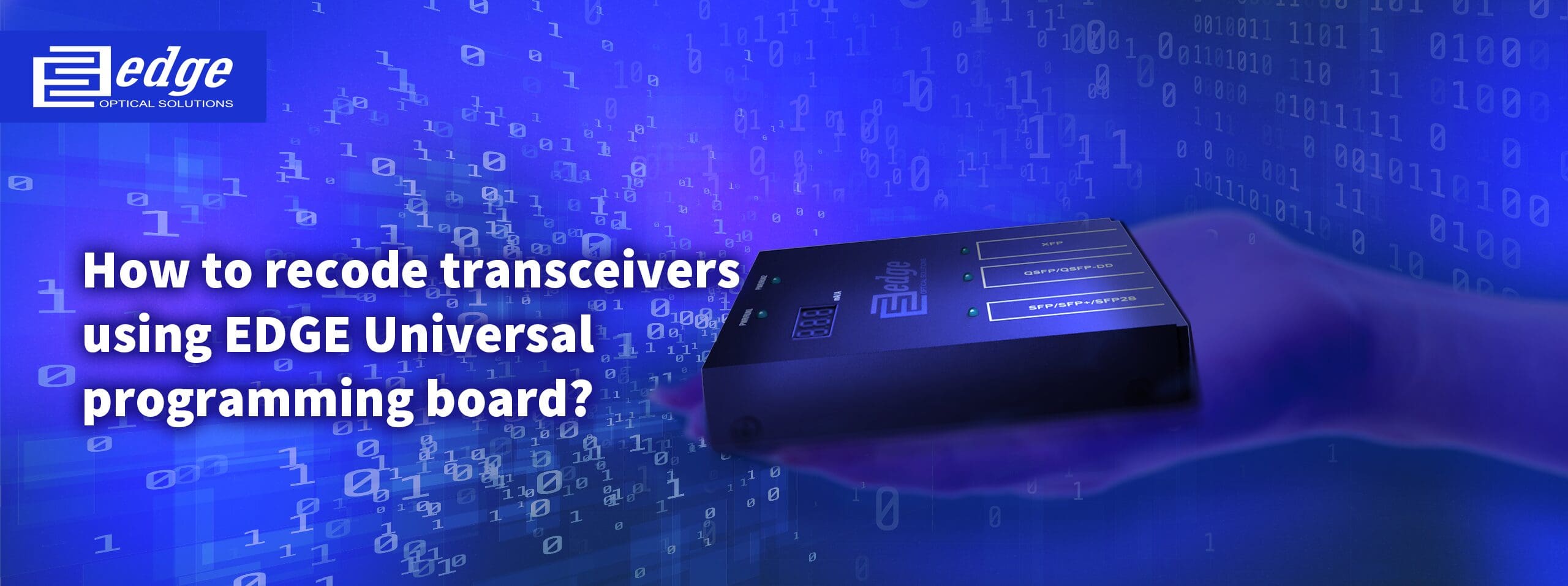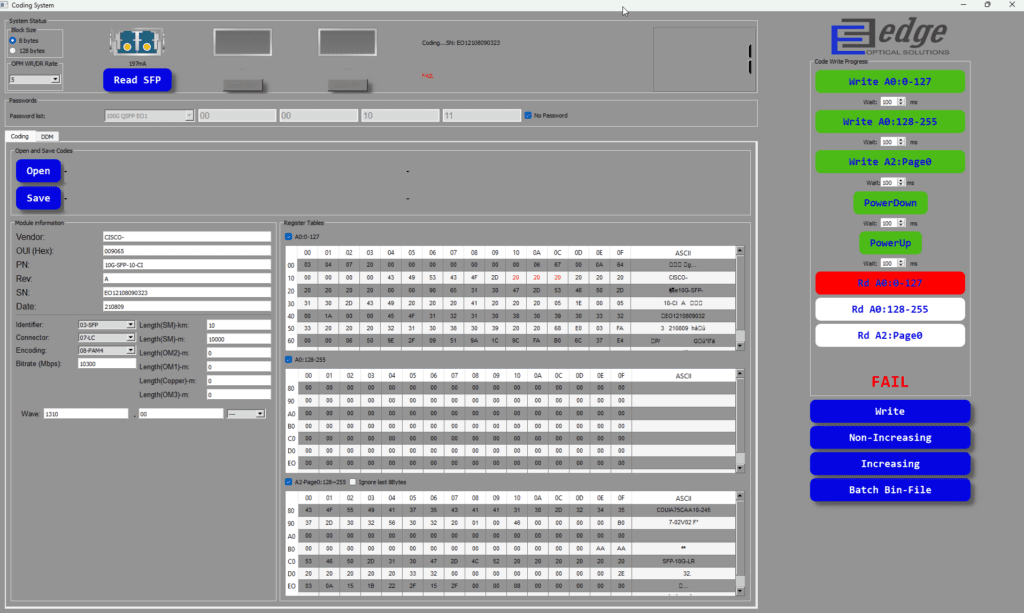
How to recode transceivers using EDGE Universal programming board?
In todays networking, we have multiple vendor equipment that is used daily. The most popular being Cisco, Huawei, HPE and other. In order for transceivers to work in each, they require specific code. From using SFPs in Cisco we can easily recode the transceivers so they are compatible in any other vendor equipment. To do so, the EDGE transceiver programming board comes in handy.
In this article we will explain how to use our PB-SFP-XFP-QSFP-QSFP-DD programming board and recode all your transceivers and cables for usage in any type of network equipment.
Content
- About our programming board
- Getting started
- The recoding process
- About each button
- Conclusions
About the EDGE programming board
The EDGE PB-SFP-XFP-QSFP-QSFP-DD programming device is a tool designed for reading and writing internal memory on transceivers such as SFP, XFP, QSFP, and QSFP-DD. It is compatible with most transceivers, supporting speeds from 155 Mbps to 400 Gbps. The device offers a wide range of applications, features an intuitive interface with effective visualization, and supports automatic sequential programming. It is simple and easy to use. More information on the transceiver programming tool can be found in the product page here.
Getting started
Once you have the programming tool on your hand you will be indicated to download the software here:
EDGE Programmer Software Download
To receive the required codes, visit the Support Re-code page, and our team will send you the necessary .bin files.
So now you have both codes and software. For starting up the software use the two USB cables – connect one USB from board to your computer and the other one from the programming tool to the power adapter.
Once you have connected all parts, be sure to check if you have CH340/CH341 driver in your computer Device Manager > Ports. Driver can be downloaded above.
Next you are ready to open up the software interface!
Open up the program and click “scan & connecting” – this will enable your computer port:
In the software you can see that there are 4 form factors to choose from:
- SFP coding – click this interface to recode 1G, 10G or 25G modules
- XFP coding – click this interface to recode any type of XFP
- QSFP coding – click this interface to recode 40G, 100G modules
- QSFP-DD coding – click this interface to recode 200G and 400G
- SFP-DD coding – click this interface to recode 100G SFP-DD
Chose the interface based on the module you need to recode and lets start!
Recoding process
We can use this programming board 4 ways:
- To recode single module, similarly as with the old board (Button – OneShot)
- To recode modules that will have one SN for all (Button – Non-Increasing)
- for example Huawei – this compatibility sometimes has only one SN for all modules, so you can use this for such cases
- To recode modules where only SN will change (Button – Increasing+1)
- for example MSA, Juniper compatibility
- To recode modules in a batch – fast programming (Button – Batch BinFile)
- for example for Cisco, HP compatibility
Each transceiver has a password for recoding (except for 1Gbps data rate modules or lower). The default password is 00 00 10 11 and it can be see in the interface above:
When you have clicked any of the recoding buttons, the program will start the recoding process and after that will output if the process has been a SUCCESS or FAIL
If the output says FAIL, be sure to change the password you are using. You can search other password in the list next to the current password:
Wohoo – you have recoded your first transceiver!
Conclusions
Ultimately, you can use whichever writing mode suits you best, but be sure to experiment with different options as well. If you have a batch of transceivers that need to be recoded for compatibility, this programming tool is extremely useful—the program automatically writes the necessary code, and all you need to do is connect the correct transceiver to the board.
If you encounter any issues with the recoding process, don’t hesitate to contact our support team!
| Part Number | Description |
| EDGE Programmer | EDGE Programmer Description |






